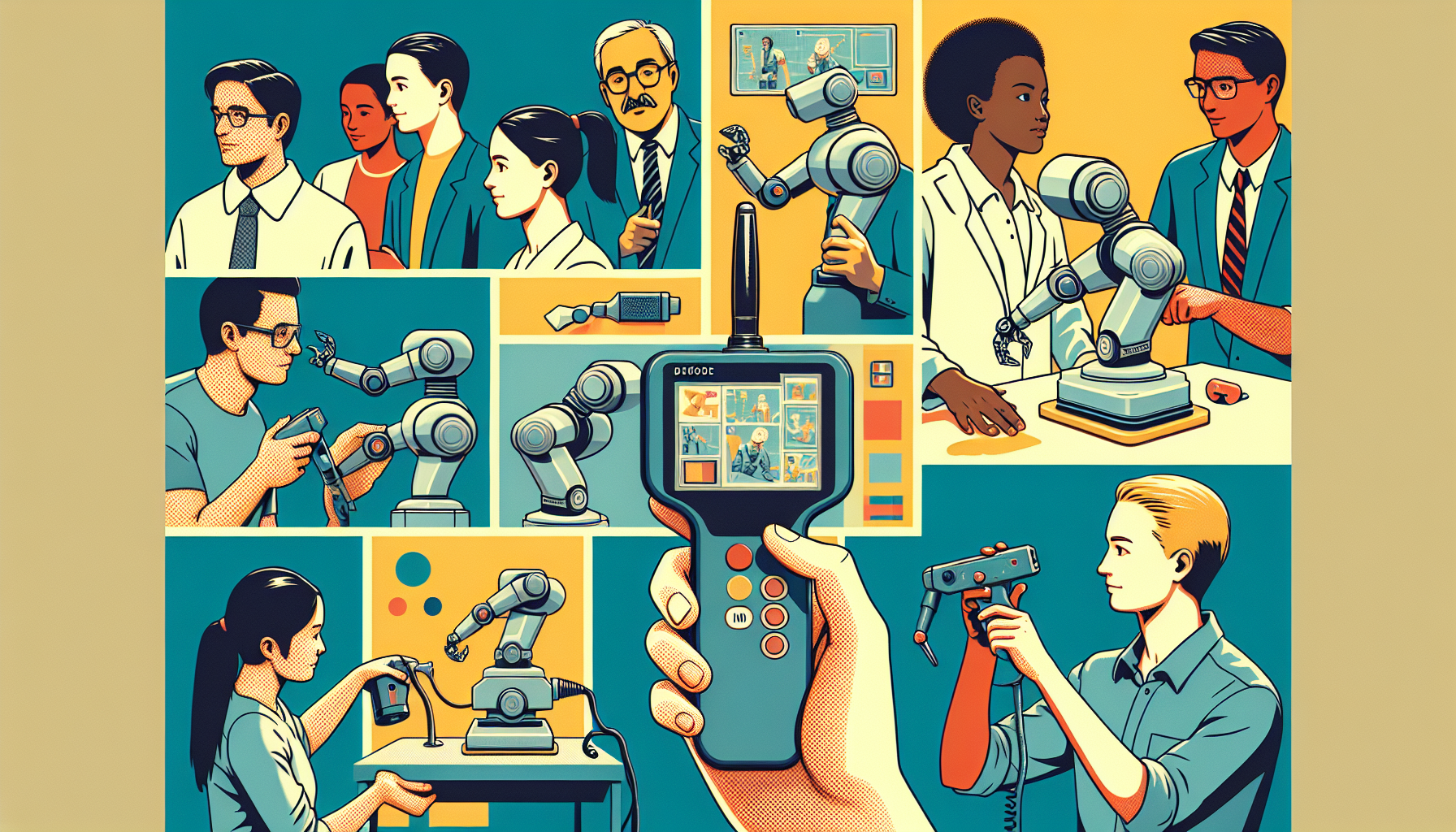MIT engineers have unveiled a remarkable handheld device that lets anyone—no coding needed—teach robots how to perform new tasks. This breakthrough makes it possible for people to show a robot what to do directly: you can guide the robot by joystick, move its arm yourself, or simply let it watch you perform the task and have it learn by imitation. This invention stands to reshape the way humans and machines work together, not only in factories, but also in hospitals and homes.
A New Way to Teach Robots
For decades, training a robot meant sitting down at a computer and writing lines of special commands. Only those with technical expertise could tell robots what to do, and each new task required careful reprogramming. Now, MIT’s handheld “demonstration interface” changes this completely. The device is designed to be attached to many types of collaborative robotic arms—those intended to work side by side with people.
It offers three flexible ways to teach:
- Remote control: Direct the robot using a simple joystick or controller.
- Physical guidance: Move the robot’s arm with your hands to show it the right motion.
- Demonstration: Allow the robot to observe as you perform the task yourself, so it can learn to imitate your actions.
These teaching styles can be used alone or combined. On a busy assembly line, one worker might teach the robot with physical guidance for tasks demanding precision, while another might rely on remote control for tasks involving risk. For creative or complex tasks, the robot can watch and learn—as naturally as a child studying a parent’s hands.
Real-World Testing
The MIT research team—led by Mike Hagenow in Professor Julie Shah’s lab—put this tool to the test with volunteers who have experience in manufacturing. These experts were handed the interface and asked to teach a standard robotic arm to carry out two common factory jobs. Even without programming know-how, participants quickly and effectively showed the robot what to do. Not a single line of code was written.
Opening New Doors
What makes this development extraordinary is its power to democratize robotics. Instead of relying on a small group of specialists, anyone on the floor, in the hospital, or at home can now step up and teach a robot. This means robots can be quickly adapted for new tasks, right where they’re needed. In environments where every hour counts, such as fast-paced manufacturing, this could help businesses respond swiftly to new demands.
In healthcare and in the home, the impact could be even more personal. Imagine a caregiver showing a robot the exact way to help a patient sit up, or a family member teaching a home assistant robot how to safely load a dishwasher.
Because the need for specialized software or advanced computer skills falls away, robots can now learn a wider range of everyday skills, directly from the people who need them most. This also opens opportunities for more natural and safe partnerships—robots become more helpful by learning on the spot, adjusting in real time to new circumstances.
Part of a Greater Vision
MIT’s approach fits within a larger movement in robotics—making machines more intuitive, more responsive, and more aware of human needs. Advances in artificial intelligence help robots better understand not just tasks but also context: which objects matter, which steps are needed, and how people prefer to work.
As robots move out of traditional factories into more personal spaces, these advances become essential. Whether packing boxes, assisting surgeons, or lending a hand at home, the future of robotics depends on systems that people can control easily and trust.
A Step Closer to Seamless Collaboration
MIT’s demonstration interface is more than a teaching tool; it is a bridge. By allowing anyone to show robots what to do, this technology brings us closer to a world where robots and humans work together naturally and safely. The promise is simple and profound: robots learning side by side with people, ready to help wherever they are needed most.

Leave a Reply